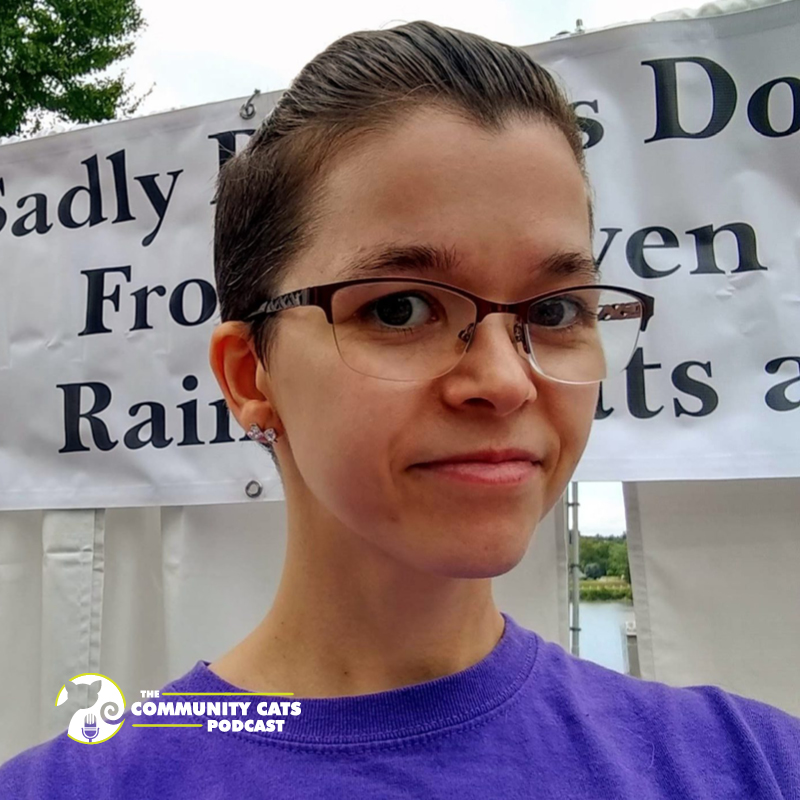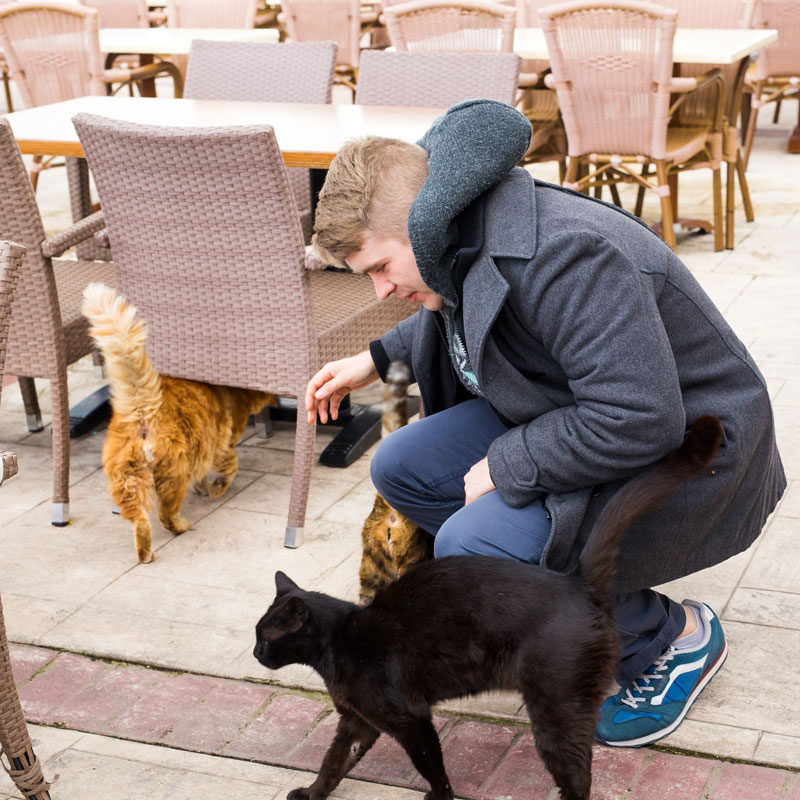
Dr. Michael Blackwell, Director of the Program for Pet Health Equity, University of Tennessee
January 5, 2021
Mikaela Fleisher, PennyFix
January 12, 2021
Today’s guest post comes to us from Krista Beucler, Marketing & Communications Intern at Community Cats Podcast.
I recently saw a presentation about socially conscious sheltering and socially conscious animal communities by Marissa Martino, Colorado Humane Society Community Liason at Dumb Friends League. I think the model presented by Marissa is a really great one for shelters and communities to consider when trying to meet the needs of constituents.
The goal of socially conscious sheltering is to create the best outcomes for every animal. The socially conscious sheltering model is guided by two key ideas: be curious and collaborate. Being curious includes being interested in and non-judgemental about your community members and your organization. Collaborating is also essential, as a socially conscious shelter involves the whole community, not just the shelter itself. These two key ideas in turn guide the eight tenets of socially conscious sheltering—the things you need to implement to become a truly socially conscious shelter:
Ensuring every unwanted or homeless pet has a safe place to go for shelter and care
Of course, every shelter wants to make sure that every pet has a safe place to go, but as we know, the volume of animals at many shelters can make this difficult. This tenet suggests considering which other community organizations and institutions shelters can partner with, including 24-hour veterinary clinics or foster-based rescues.
Placing every healthy and safe animal
For this tenet, healthy means that the animal “shows no signs of clinical disease or if there is a disease, there is a reasonable expectation for a good quality of life.” Safe means that the animal “has not exhibited behavior that is likely to result in bodily injury or death of another animal or person.” These definitions are important in cases like those of FeLV+ cats, who can still lead good lives with adopters. It’s also important to note that this tenet is not suggesting that all feral cats should be adopted. For many of those cats, that would not actually be the best outcome, as they would be stressed out or might become aggressive in a home.
Assessing the medical and behavioral needs of homeless animals and ensuring these needs are thoughtfully addressed
It’s important to consider your shelter’s capacity for care here. Capacity for care is how many animals you are able to provide quality, humane care to, not simply how much space you have. Collaborations with medical and behavioral professionals are also important for this tenet, as is creating a process for identifying when an animal needs medical or behavioral support so that they can receive the care they need.
Alleviating suffering and making appropriate euthanasia decisions
Euthanasia decisons are always difficult, but creating a compassionate and thoughtful policy for those decisions is essential to creating a culture that supports the best outcome for every animal.
Aligning policy with the needs of the community
It’s important to be in tune and in sync with your community, in order to make sure you are offering what they need. Curiosity is key here; though your shelter is a part of the community, be open to hearing what community members from different areas and backgrounds have to say about where their needs aren’t being met. You can create partnerships with other community organizations and work with them to evaluate how well you are meeting the community’s needs.
Enhancing the human-animal bond through thoughtful placements and post-adoption support
Smaller organizations may have difficulty providing post-adoption support, so this can be another opportunity to reach out into the community to see what other resources are available to point adopters toward.
Considering the health and wellness of each animal when transferring animals between communities
Transporting animals can be a particularly important part of meeting a community’s needs, either when there is a surplus of healthy and safe animals and not enough adopters, or when there is a surplus of adopters and not enough healthy and safe animals.
Fostering a culture of transparency, ethical decision making, mutual respect, continual learning, and collaboration
Finally, creating a culture of transparency, ethical decision making, mutual respect, continual learning, and collaboration is essential to the positive growth of your organization and to the strength of the community.
I’ve just touched on each of the eight tenets, but you can find more information, questions to ask, and considerations to make for each tenet in this handout.
Ultimately, a socially conscious animal community includes the whole community, not just shelters. The idea is that creating partnerships between shelters, rescues, veterinarians, public policy makers, the media, law enforcement, and community members helps to improve the quality of life for all community members, human and animal. To learn more about what each of these groups can do to build a socially conscious animal community,visit the Socially Conscious Animal Community’s website.
 Originally from Colorado, Krista Beucler received a Bachelor of Arts in creative writing at the University of Mary Washington (UMW) in Virginia. She was the editor-in-chief for Issue 7.2 of the Rappahannock Review, the literary journal published by UMW. Krista’s creative work has been published in From Whispers to Roars literary magazine. She is spending COVID-19 at home with her cats.
Originally from Colorado, Krista Beucler received a Bachelor of Arts in creative writing at the University of Mary Washington (UMW) in Virginia. She was the editor-in-chief for Issue 7.2 of the Rappahannock Review, the literary journal published by UMW. Krista’s creative work has been published in From Whispers to Roars literary magazine. She is spending COVID-19 at home with her cats.




